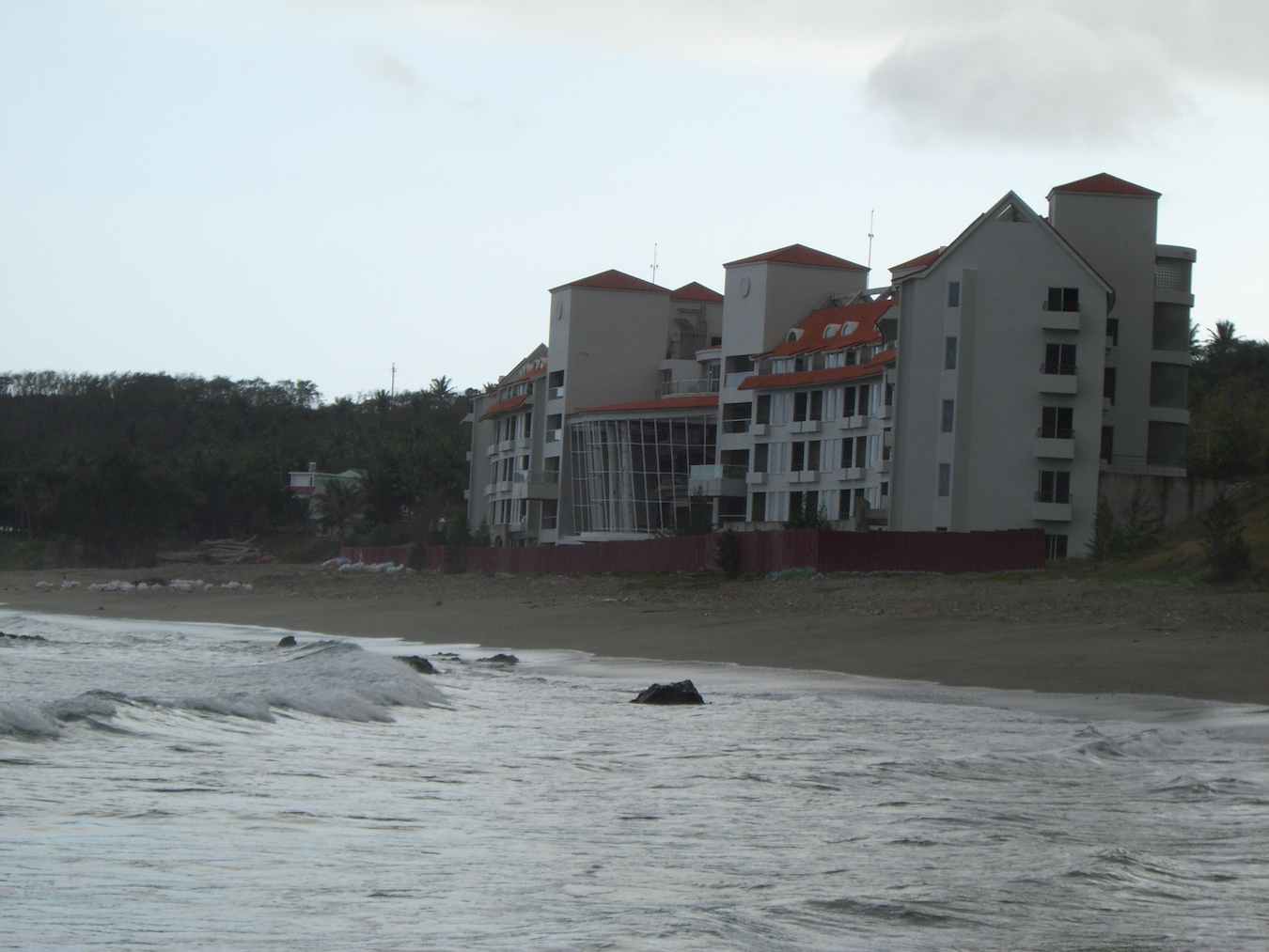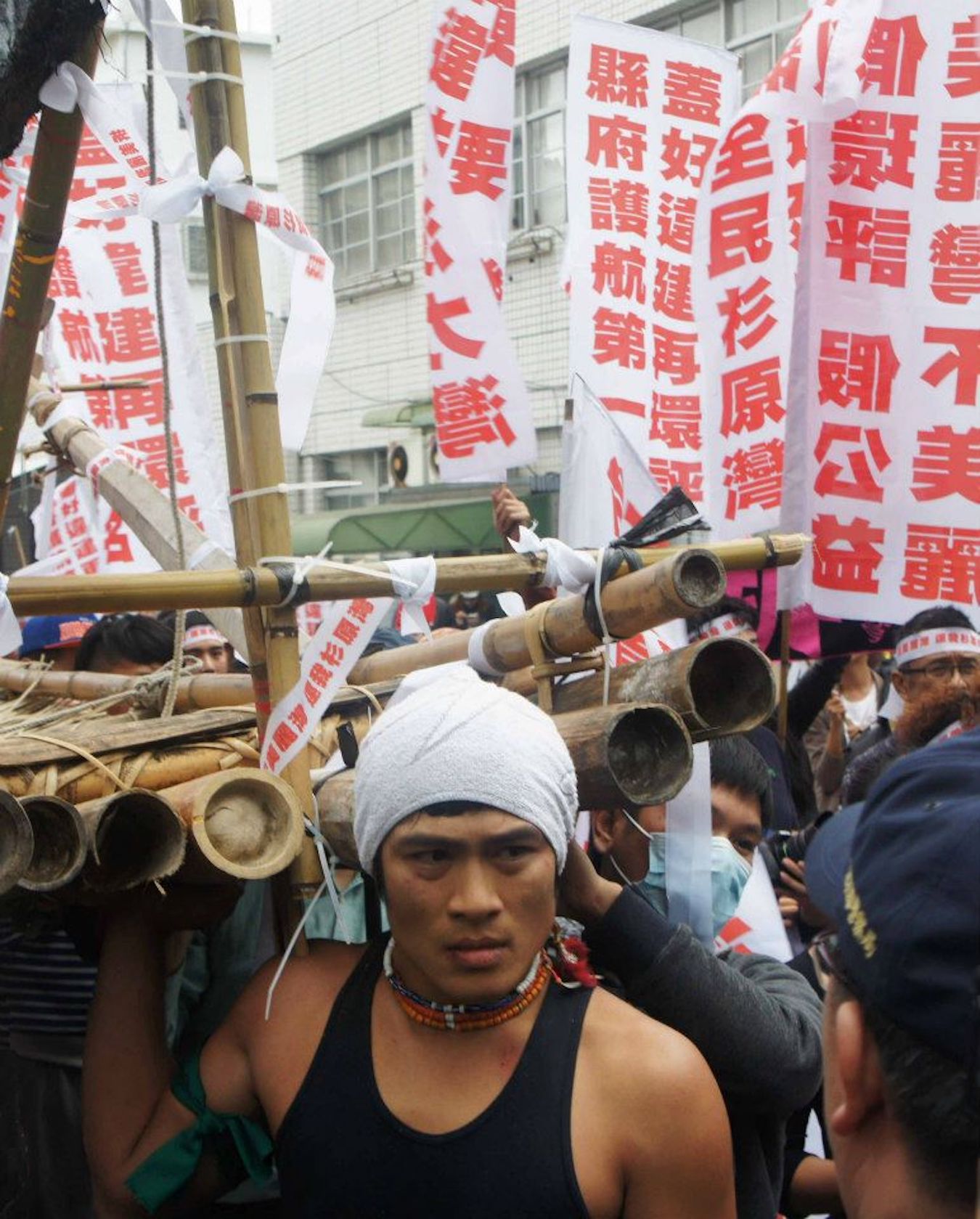by Brian Hioe
語言:
English
Photo Credit: Yoxem/WikiCommons/CC BY-SA 3.0
THE CONTROL YUAN condemned the construction process for the Miramar Resort in Taitung late last month, arguing that an investigation should be carried out into the construction process for the beach resort. The Control Yuan made the assessment after visiting the site of the planned Miramar Resort and interviewing local residents.
The Miramar Resort began construction in 2005 after land originally seized from Indigenous residents in 1987 was turned over by the government to developers in 2004. The land has been inhabited by Amis residents, but the land seizure made them squatters on land that they originally occupied for over 90 years, with only some of them securing legal residency on land they had long lived on. The Indigenous residents of the area refer to the land as Fudafudak.
 The Miramar Resort construction site. Photo credit: Portnoy Zheng/WikiCommons/CC BY 2.0
The Miramar Resort construction site. Photo credit: Portnoy Zheng/WikiCommons/CC BY 2.0
Construction for the Miramar Resort was halted in 2007, with only one of the two main planned hotel structures built. Local residents, particularly Indigenous communities around the resort, and environmentalist groups led the opposition that pushed for the halting of construction. To this extent, local residents pointed out that there had never been an Environmental Impact Assessment (EIA) undertaken for the resort construction, as well as that the developers changed construction plans from what was initially reported.
This included changing building plans from 4 stories to 6 stories and expanding 80 hotel suites to 123 suites, as well as expanding construction from an original .96 hectares to 6 hectares of beach in public and private hands. Walls would have been constructed to block beach access from the local community, while local homes were given eviction notices in short order. Likewise, local residents believed that in the absence of an EIA, the buildings for the project were in danger of being swept out to sea by a typhoon of sufficient size. An EIA that was carried out was later thrown out for including too many government officials.
Despite that construction was halted in 2007, locals remained suspicious of unexplained projects in the vicinity of the resort site, such as road construction or construction for a sewage processing plant, that may have been meant for Miramar or other hotels in the area. Locals still faced the threat of eviction if construction was resumed, perhaps under a new developer, as sometimes occurs with long-halted development projects in Taiwan. Consequently, some residents have called for the demolition of structures built for the project, citing structural integrity issues.
In particular, issues of graft are endemic in Taiwan regarding build-operate-transfer (BOT) agreements such as the Miramar Resort project, often involving collusion between corrupt local governments and developers. As such issues are particularly deeply-rooted in rural areas in Taiwan, this could include the Miramar Resort project.
At present, the beach is run by the government as a beach and park, according to Taitung government officials. This took place after a 2020 arbitration ruling that led the Taitung county government to pay 629 million NT to the Miramar Resort Hotel Company responsible for the troubled resort’s construction. The original BOT would have allowed the Miramar Resort Hotel Company to operate the resort for fifty years, before turning the land back to the Taitung county government, with the company basing its lawsuit on claims that the agreement was violated. For its part, the Taitung county government argued that the halting of the construction was due to force majeure.
 2012 protest against the Miramar Resort. Photo credit:
2012 protest against the Miramar Resort. Photo credit:
The ruling was that the county government needed to pay Miramar for the value of the project, but did not need to pay regarding the EIA, delays, and the halting of the construction, since the company took on the risks of the project by overseeing it. The verdict was seen as a partial victory for protesters against the construction.
It is to be seen whether there is further investigation into the Miramar Resort’s construction process after the recent Control Yuan report. The report suggested that local government officials had sought to cover up their own role in the construction, which may open the path to further charges being filed.
In the meantime, such issues continue to take place on Taiwan’s eastern coast. Earlier this month, 150 Indigenous community members attended a hearing held regarding the Mandifu development project in Taitung in traditional clothing. The development project is ten times the size of the Miramar Resort project, with local residents calling attention to the fact that it would affect local residents, as well as damage the environment due to increased traffic, sewage from the resort, and etc. As such, the Miramar Resort case only scratches the surface of a much larger issue in Taiwan.

